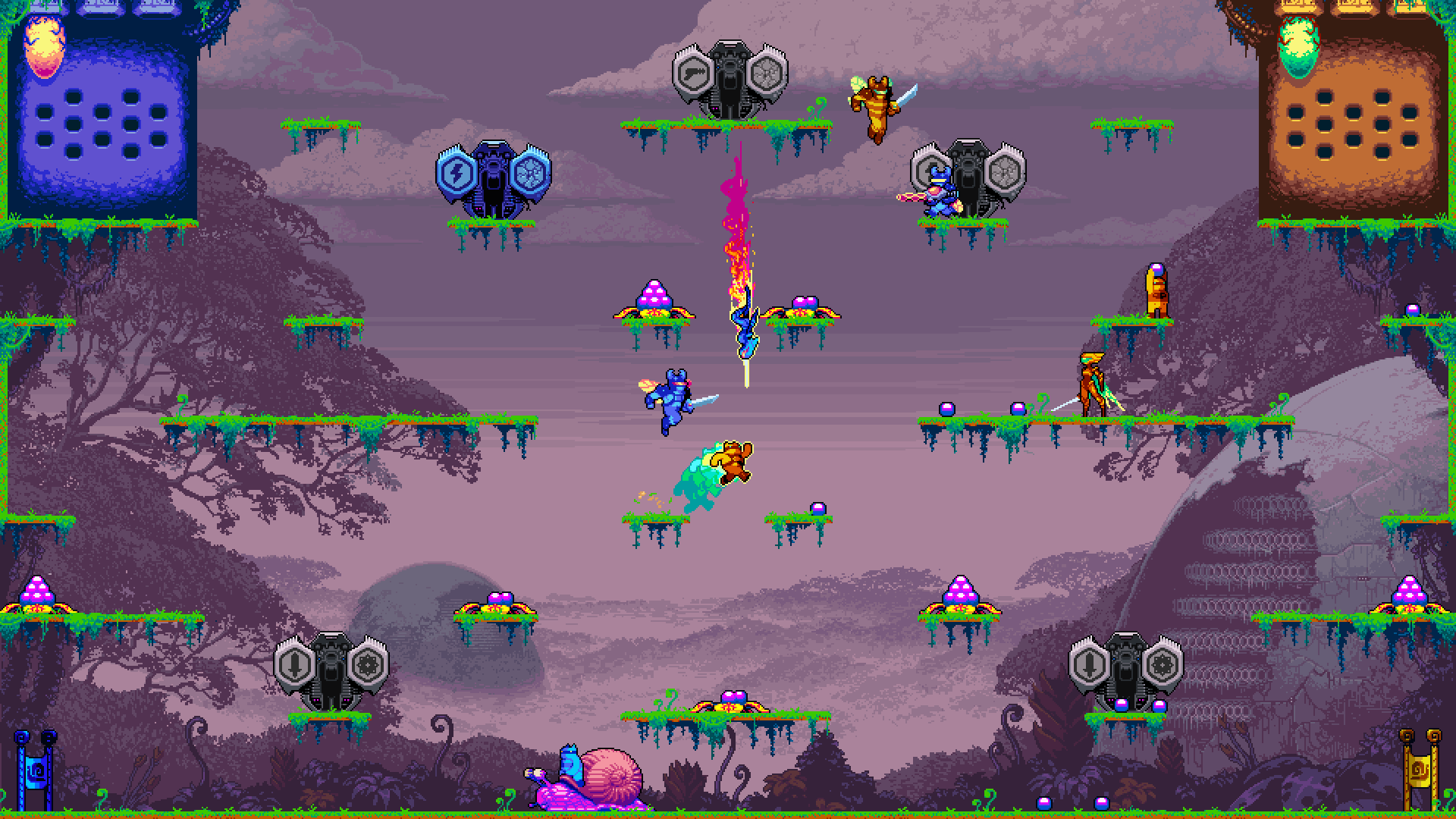Killer Queen Black is the most fun you can have without high-fiving a stranger

Every Friday, A.V. Club staffers kick off our weekly open thread for the discussion of gaming plans and recent gaming glories, but of course, the real action is down in the comments, where we invite you to answer our eternal question: What Are You Playing This Weekend?
Few games in modern memory throw people together with more joyful force than Killer Queen, the competitive alien bee simulator that has, over the last six years, become an arcade sensation in the more up-to-date style of the arcade. Unless you’re doing league play, or have nine friends handy on a Friday night—in which case, please, tell me how the hell you manage that—a full game of the competitive snail-riding joyride is almost guaranteed to have strangers bumping elbows, trading quarters, and screaming about the slow but decisive progress of that goddamn snail. It’s the sort of barely controlled chaos that almost anyone is welcome to join in on, too; in a world where even the most social of arcade visits tend to be at least a little bit sheltered, it’s a game capable of bringing down the normally hard-etched divides we put up around ourselves while gaming in a public space. (The fact that a credit’s worth of quarters—usually four—pays for an entire team, regardless of how many people are on it, doesn’t hurt.) It’s “the more the merrier!” as a design principle, and it’s intoxicating stuff.
It’s also depressingly inaccessible if you’re not living in close proximity to the couple dozen cabinets out there in the wider world.
The creators behind Killer Queen Black—newcomer Liquid Bit’s authorized attempt to recreate BumbleBear’s arcade bee-light for a home environment—obviously can’t replicate the “Hey, can I hop in and take a bee?” experience of the original. Which means that all they have left to sell their efforts on is an extremely compulsive, highly addictive multiplayer game, one that prizes strategy and misdirection even more than twitch reflexes. (Though twitch reflexes are also pretty key.)
First, your obligatory Killer Queen primer, which the game itself knocks out in a clear and instructive tutorial: Two teams of bee-people (four apiece here, as opposed to five in the arcade version) enter into an abstracted form of war, attempting to overpower the enemy by either out-harvesting them, out-fighting them, or driving a slow-moving snail into a goal. In practice—both in the arcade, and at home—it’s a fractious exercise in divided attentions; players need to keep track of everything from how many berries the enemy team has captured, to the status of the snail, to how many of the gates that allow them to activate power-ups and upgrades are currently on their team’s side. (All of which is only multiplied for whoever’s playing as the Queen, both the most powerful and the most vulnerable of her side’s pieces.) In the arcade, this is mostly managed by attempting to yell, “SNAIL! SNAIL! SNAIL!” at a cheerfully drunk stranger while loud techno music blares; here, Liquid Bit has installed a clever set of Apex Legends-style tags to help you direct teammate attention to trouble spots.
The gameplay itself has been lightly tweaked, meanwhile, especially the combat; the addition of new weapons for non-Queen players, and a new lunge move for her majesty herself, moves it a little further from the Joust riff the original offered. Rounds tend to be a little faster—though that might be a consequence of playing pre-release, when the majority of games were supplemented by Liquid Bit’s rather ruthlessly programmed AI bots.
Which brings us to the biggest caveat against diving straight into Black, one that may or may not (hopefully not) end up being a problem when the game releases: lag. As a game about two quickly moving, extremely mobile killers essentially playing Nidhogg with each other in mid-air, Killer Queen is extremely sensitive to hiccups or latency, and nothing can rob the joy from a duel between two Queens like watching your opponent flit in bursts of latency across the screen. That being said, even in the pre-release environment, this problem was by no means widespread. Writing this on Tuesday (with the game out today, likely as you’re reading this), I’m hopeful that matchmaking can smooth this out with a wider player base to pull from; when the game works properly, it’s an absolute thrill to see these fights play out.
As a home version, Killer Queen Black cannot, almost by definition, recreate the thing that makes the original Killer Queen so special. Even if you use built-in voice chat features to communicate with your teammates, it’ll never match the sensation of cheering along with happy drunken strangers as you push the snail those last precious inches into the goal. But as a way to translate a fiendishly well-designed new take on multiplayer gaming into the hands of millions of Switch and PC players—as opposed to mere thousands of arcade patrons—it’s a worthy and welcome effort.